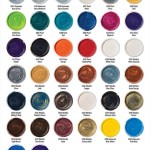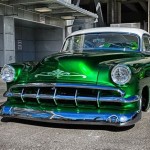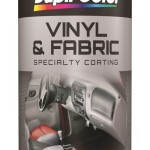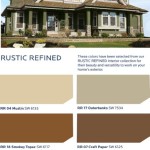Decoding Toyota Paint Color Codes: A Comprehensive Guide
Toyota vehicles are renowned for their reliability and longevity, and a key component of maintaining their appearance is understanding their paint finishes. Paint color codes are essential for matching the original color during repairs or modifications. This article provides a comprehensive guide to understanding and locating Toyota paint color codes, as well as delving into factors affecting paint matching accuracy and tips for ensuring a proper repair.
Understanding the Significance of Toyota Paint Color Codes
Toyota paint color codes are alphanumeric identifiers assigned to each specific paint shade used on their vehicles. These codes are crucial for several reasons. Firstly, they provide a precise reference point for paint manufacturers and auto body shops to recreate the exact color originally applied to the vehicle. Without the correct paint code, achieving a seamless color match becomes exceedingly difficult. Even paints that appear similar to the naked eye can have subtle differences in hue, undertone, and metallic flake composition. These differences become glaringly obvious, especially in direct sunlight. This is particularly important when refinishing damaged panels or adding aftermarket accessories that require painting.
Secondly, paint color codes facilitate accurate ordering of touch-up paint for minor scratches and chips. Using the correct touch-up paint prevents noticeable blemishes, preserving the vehicle’s aesthetic appeal. Moreover, consistent use of the designated paint code helps maintain the vehicle’s resale value. A car that shows evidence of mismatched paintwork can raise concerns about the quality of previous repairs, potentially deterring potential buyers. Paint codes also aid in identifying variations within a single model year. Toyota might offer several shades of the same color, each distinguished by a slightly different code to account for subtle adjustments in paint formulation or application techniques. Therefore, knowing the specific code ensures the application of the exact shade intended for the vehicle.
Finally, understanding the paint code is invaluable when purchasing replacement body panels or accessories that need to be painted to match the existing vehicle. This ensures that the new components blend seamlessly with the original finish, maintaining a cohesive and professional look.
Locating the Toyota Paint Color Code
Finding the Toyota paint color code usually involves searching for a specific identification tag on the vehicle. The location of this tag can vary slightly depending on the model and year. The most common location is the driver's side door jamb. This area is easily accessible and less prone to damage than other parts of the car. The tag is normally a small, rectangular sticker containing various vehicle-specific information, including the vehicle identification number (VIN), model code, trim level, and the paint color code. Carefully examine the door jamb, looking for a sticker that is clearly labeled. Toyota paint codes are typically three digits long and are usually numeric, alphanumeric, or a combination of both.
If the door jamb tag is missing or damaged, other possible locations include the engine compartment firewall, under the hood, or inside the glove compartment. Check these areas thoroughly before resorting to alternative methods like contacting a Toyota dealership with your VIN. When examining the tag, pay close attention to the labels around the code. The paint code is often preceded by terms like "Color," "Paint," "C/TR" (Color/Trim), or "Exterior Color." Once the code is located, it is important to record it accurately. Double-check each digit or character to avoid mistakes when ordering paint or providing the information to a body shop. Even a slight discrepancy in the code can lead to significant color mismatch.
In some cases, older vehicles may not have a clearly labeled paint code on the tag. In these situations, contacting a Toyota dealership with the VIN is the most reliable way to obtain the correct color information. The dealership's database can retrieve the original paint code assigned to the vehicle at the time of manufacture.
It is also worth noting that online paint code lookup tools can offer assistance, but their accuracy can vary. Exercise caution when using these tools and cross-reference the information with other sources whenever possible. Supplying the tool with the correct year, make, and model of the car is essential for narrowing the search.
Factors Affecting Paint Matching Accuracy
While the paint color code provides a crucial starting point, achieving a perfect paint match is not always a straightforward process. Several factors can influence the final result, even when using the correct code. One of the most significant factors is age-related paint fade. Over time, exposure to sunlight, weather elements, and environmental pollutants can cause the paint to fade and change its original hue. This fading is particularly pronounced in red and other vibrant colors. When matching paint on an older vehicle, it is vital to account for this fade to accurately replicate the current color of the surrounding areas.
Another contributing factor is the paint application technique. The way the paint is applied, including the number of coats, the spray gun settings, and the skill of the painter, can affect the final color appearance. Subtle variations in application can create differences in the paint’s sheen, texture, and overall depth of color. Furthermore, the type of clear coat used can also impact the final result. Different clear coats can have varying levels of gloss, UV protection, and chemical resistance, all of which can influence the perceived color of the paint. Matching the clear coat to the original finish is crucial for maintaining a consistent appearance.
Environmental factors during the painting process can also affect the outcome. Temperature, humidity, and air quality can all influence the way the paint dries and cures, potentially leading to variations in color and finish. It is imperative to paint in a controlled environment to minimize these variables.
Finally, the quality of the paint itself plays a significant role. Using high-quality automotive paint from a reputable manufacturer is essential for achieving a durable and accurate color match. Cheaper paints may not have the same pigment concentration or consistency, leading to differences in color and durability.
Tips for Ensuring a Proper Paint Repair
To maximize the chances of a successful paint repair, several precautions should be taken. Firstly, always start by confirming the correct paint color code for the vehicle. Use multiple sources, such as the vehicle’s identification tag and a Toyota dealership, to verify the code and minimize the risk of error. Provide the auto body shop with this verified paint code. Secondly, consider having the paint matched by a professional paint supplier or auto body shop. They have access to specialized equipment and software that can accurately analyze the existing paint on the vehicle and formulate a custom blend to match the color, accounting for age-related fading and other factors.
Thirdly, communicate any relevant information to the paint technician. This may include details about any previous repairs, the age of the vehicle, and any known variations in the original paint finish. Providing as much context as possible helps the technician make informed decisions about the paint matching process. Fourthly, request a test panel before painting the entire vehicle. A test panel allows the repairer to apply the paint to a small, inconspicuous area and compare it to the surrounding paint. This step is crucial for identifying any discrepancies in color or finish and making necessary adjustments before committing to a large-scale repair.
Fifthly, ensure that the body shop uses high-quality materials and follows proper painting techniques. This includes using appropriate primers, clear coats, and application methods. The expertise and experience of the painter are also essential. A skilled painter can compensate for minor variations in paint formulation and application, resulting in a more seamless and professional finish. Sixthly, after the painting is complete, allow the paint to fully cure before exposing the vehicle to harsh weather conditions or applying any waxes or polishes. Proper curing ensures that the paint hardens properly and achieves its optimal durability and color stability.
Lastly, consider blending the new paint into adjacent panels. Blending involves gradually fading the new paint into the surrounding areas to create a more seamless transition. This technique is particularly useful when matching paint on older vehicles where significant fading has occurred. Blending helps to minimize the appearance of any color differences between the new and original paint.

Auto Paint Codes 1997 Toyota Car Colors Code Color

Color Chart Toyota Auto Paint Google Search ランドクルーザー デザイン 車

Cruiser Color Codes

2024 Toyota Rav 4 Colors Paint Codes Color Charts

Toyota Paint Chart Color Reference

Super White Toyota 040 Basecoat Paint Gallon High Teck Hfp158

Toyota Land Cruiser Paint Color Codes And Names 1961 1975 The Old

Toyota

Toyota Paint Chart Color Reference

Cruiser Color Codes Range Rover Voiture Couleur
Related Posts








